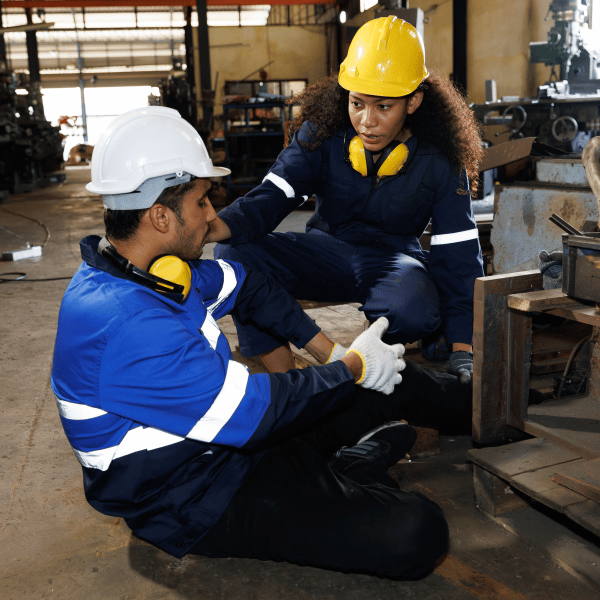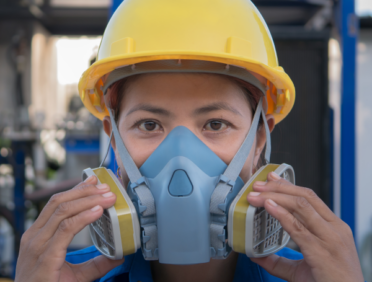No matter what industry your business is in, or that you work in health and safety is an important thing to focus on and keep in mind. This is particularly true when it comes to first aid in the workplace.
First aid, even the most basic levels of first aid can actually save lives. This is why it is important to ensure that you know what first aid at work is and what is a legal requirement to have too.
What is First Aid at work?
First aid at work is when immediate attention is given to someone who has had either an accident, ill health or perhaps an injury. It is most likely that first aid at work is going to be basic and it is needed to assist work colleagues that need it.
In order to ensure that first aid is provided to the right level those who provide colleagues with first aid assistance at work should have the relevant level of training.
What are the legal requirements of for first aid in the workplace?
As a part of the Health and Safety (First Aid Regulations) 1981 it has been outlined that employers need to be able to provide appropriate levels of first aid support and assistance within the workplace.
In order to do this they should provide appropriate first aid equipment, facilities and trained colleagues.
It is important to recognise that the appropriate level of first aid within a business will entirely depend on the circumstances that the workplace presents. This will outline what level of training first aiders are going to need, what should be in a first aid box and whether or not there are going to be any additional considerations or measures that need to be put in place.
The First Aid Regulations of 1981 do not actually put a legal duty on employers to provide first aid provision for non-employees such as the general public or children within schools. Despite this, the HSE will strongly recommend that you include them in your first aid provision.
Do you legally need a first aider at work?
When it comes to having a first aid provision in your workplace you should know that it is not a legal requirement that you have a fully trained first aider. That said, you do need to have at least one person on site who has been appointed to take charge of the first aid provisions.
What is the main legislation for first aid at work?
When it comes to main legislation that relates to first aid at work, you should focus on the Health and Safety (First-Aid) Regulations 1981. These outline what you need to know as an employer when it comes to first aid at work and what your legal requirements are.
The Health and Safety (First-Aid) Regulations 1981
As we have already highlighted, when it comes to first aid in the workplace, the Health and Safety (First-Aid) Regulations 1981 ensures that employers understand what the needs are relating to first aid and how they can ensure that they are within the regulations that are outlined.
What is the Health and Safety first aid Regulations 2013?
On the 1st October 2013 the 1981 Health and Safety (First Aid) Regulations had an amendment made to them. This amendment removed the requirement for HSE to approve any first aid training and qualifications that are offered and secured in the workplace.
These changes were made so that businesses have more flexibility in how they manage their provision of first aid in the workplace and what is going to work best for them.
What are the employers’ responsibilities regarding first aid?
It is the responsibility of the employer to ensure that employees are going to receive immediate attention should they fall ill at work or they are injured. It should always be the aim of the employer to recognise that both accidents and illness can occur at any time in a working day and that the appropriate first aid can save lives and also prevent any minor injuries from becoming major ones.
What are the employees’ responsibilities regarding first aid?
An employee does not have any specific duties that relate to first aid in the workplace. However, it is always a good idea to ensure that you share with your employer any health issues that you may have that could have an impact on their first aid needs assessment.
This is because employers cannot make a provision for things that they are not made aware of.
First Aid Needs Assessments
The HSE cannot tell an employer what provisions that they should make in order to provide first aid to those in their workplace. It is entirely down to the employer to recognise their own needs and then put in place what they perceive to be the right level of first aid provision.
All that the HSE outline is that the first aid provision is adequate and appropriate. This covers first aid equipment, facilities and qualified first aiders.
The best way to decide what first aid provision is going to be appropriate for your workplace is to carry out a first aid needs assessment. This should consider the circumstances that apply to your workplace, those who work in your workplace and any hazards or risks that you may recognise.
Some of the key considerations within in a first aid needs assessment include:
- The nature of the work that you do
- Any specific workplace hazards and risks
- The size of your workforce and the work that they do
- The working patterns of your staff
- Whether or not appointed first aiders within the workplace are going to be absent or on holiday
- Any history that your workplace may have of accidents
- Remote workers and lone workers
- How your workforce is distributed
- What first aid provision you may provide for non-employees who may be on site
Once you have carried out a first aid needs assessment then you can think about the right provisions for your business and how you can ensure that it is offered to those on site.
First aid kit minimum requirement
There is no legal requirement for what should be in a first aid kit, however, the contents of your first aid kit should be based on the first aid needs assessment that you carry out on your workplace.
If you own a business where staff are usually based at work, therefore could be seen as low-risk, will often have a first aid kit that includes:
- A general guidance leaflet on first aid at work
- Sterile plasters in assorted sizes, all individually wrapped
- Sterile eye pads
- Triangular bandages, wrapped individually and preferably sterile
- Safety pins
- Wound dressings, both large and medium sized. Individually wrapped
- Disposable gloves
Once you have put together your first aid kit then you need to make sure that you check the contents on a regular basis. Many of the items that are in the kit (especially those that sterile) will need to be checked to ensure that their expiry dates have not been met. If they have become out of date then they should be disposed of and replaced.
Any items that are not sterile and that do not have a date on them, should be checked to ensure that they are fit for purpose.
Workplace risk assessment
The idea of workplace risk assessments is that they are a careful examination of your workplace. You should consider what in the workplace could cause harm to people, both employees and those who may be visiting.
Once these risks have been highlighted, you need to ascertain whether or not you have taken precautions to ensure that you prevent harm. This is because workers (and other people on site) have the right to be protected from harm, in particular harm that has been caused by a failure to take control measures.
First Aid at work online training
In order to ensure that those who are given the responsibility of first aid in the workplace have the right knowledge, they are going to need to be given the right level of training to enable them to provide first aid help when it is required.
This means that they need to attend first aid at work training. This training can be in person, provided by training experts, or, if you prefer you could always offer the course online.
The idea of offering it online means that your colleagues can complete it at a time that works best for them. They can take it in the evening, when they are not at work, which means that they don’t need to take any time out of their every day work to complete the training.
What is a first aid at work certificate?
The main course that many business owners are going to want to provide those that work within their business is First Aid at Work. The first aid at work certificate covers the basics of providing emergency first aid to someone who becomes ill or injured whilst they are in the premises.
Some of the key aspects that the first aid at work certificate covers includes:
- How to examine a casualty
- Use a defibrillator
- Basic life support
- Controlling bleeding
- Trauma
- How to apply first aid to specific injuries and illnesses
All of these things together will help the first aider to be able to overcome a potentially threatening situation, just long enough to allow for those who are medically trained to arrive on scene and to take over.
This training course will provide you with a certificate, whether you study online or in person and it will be valid for three years before it will need to be taken again.
To download a .pdf of this blog, please click here












